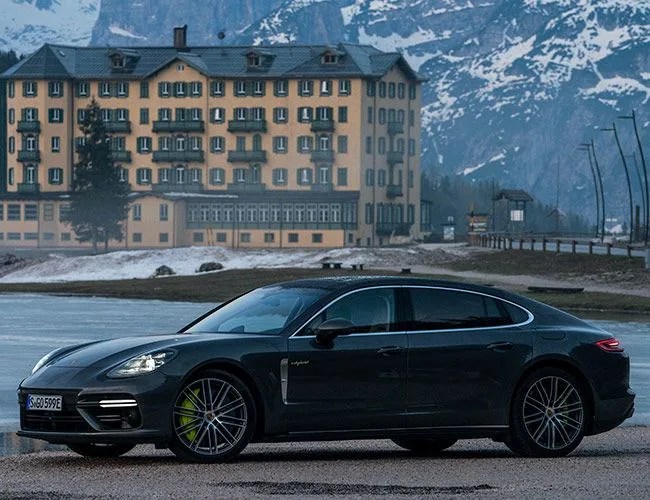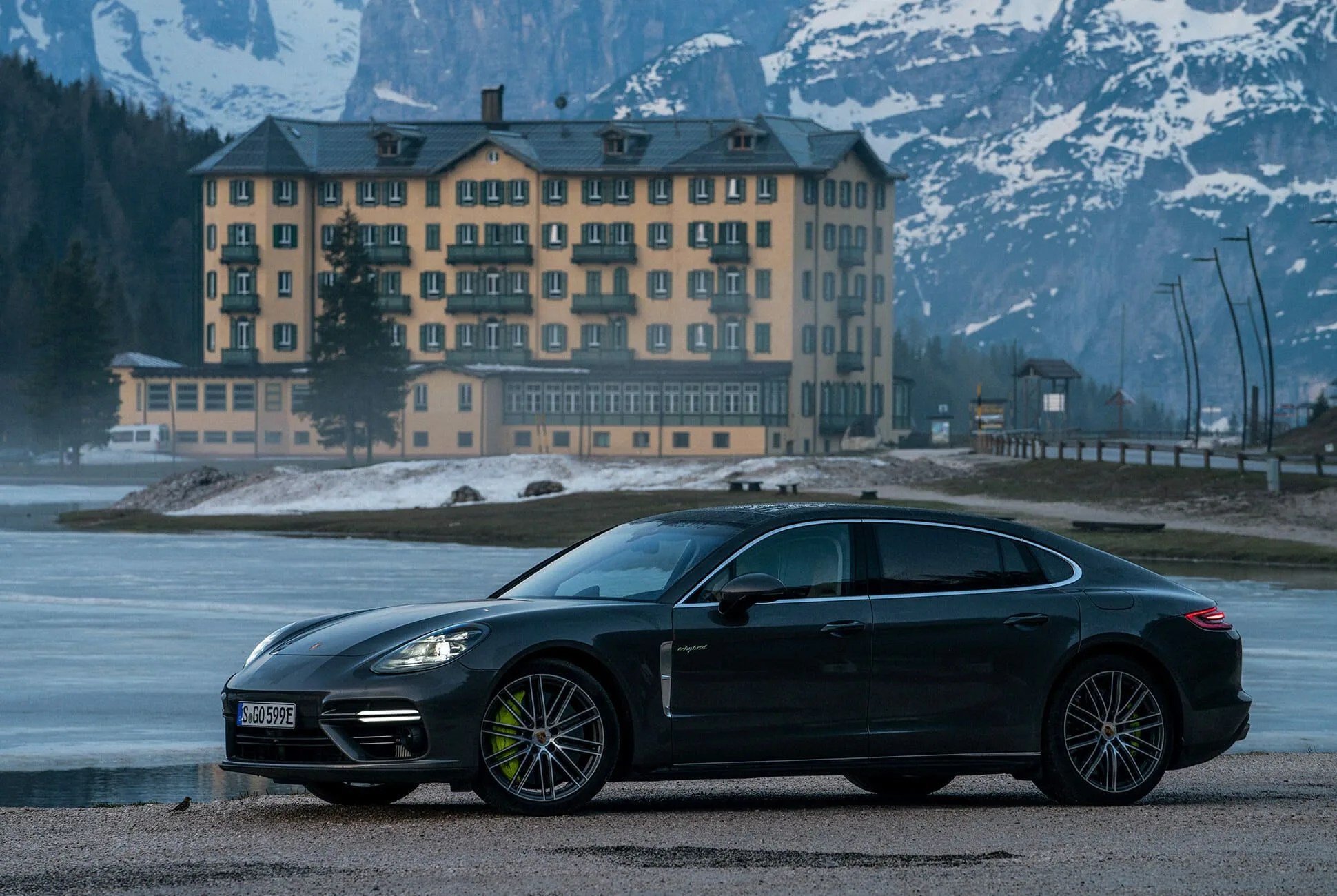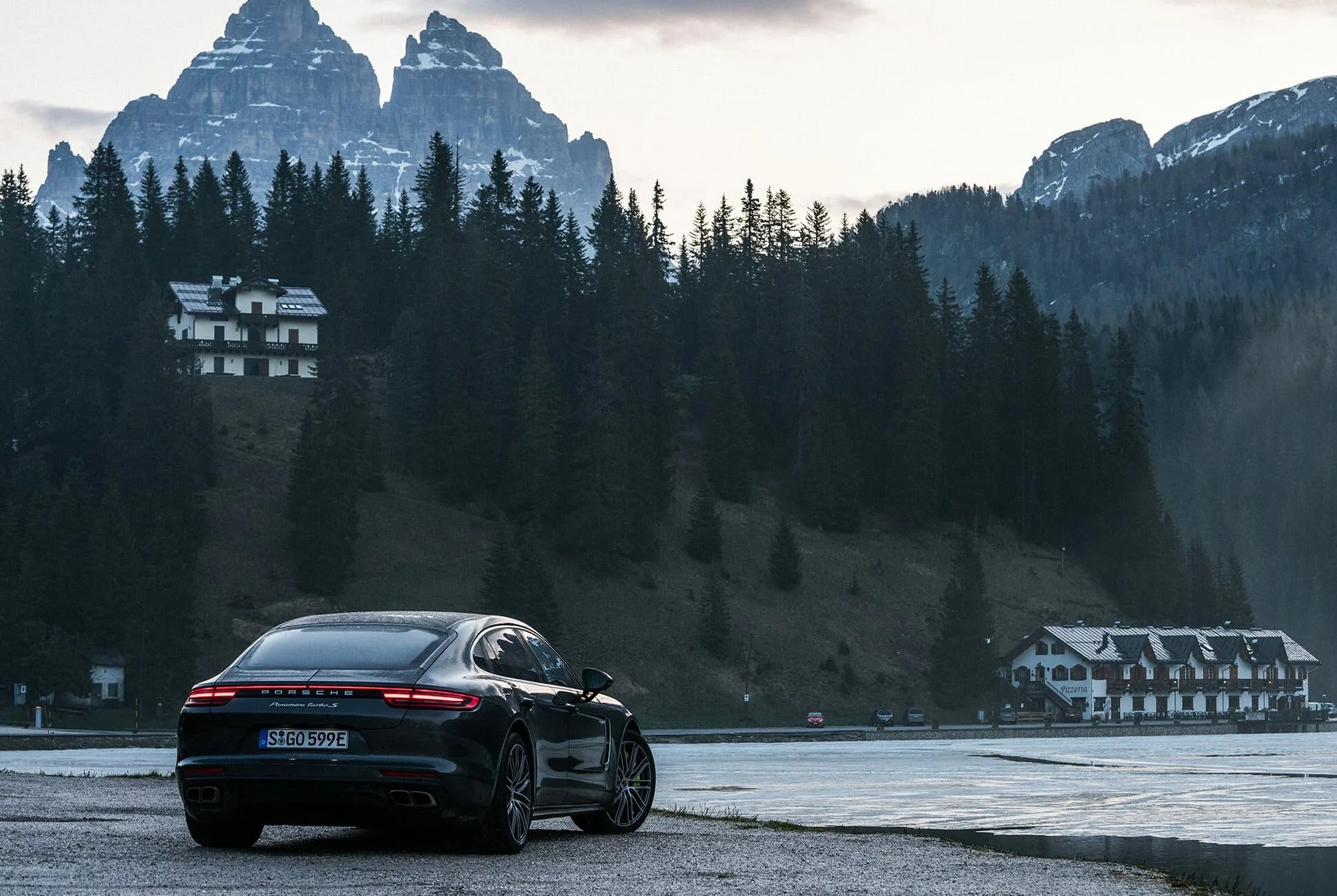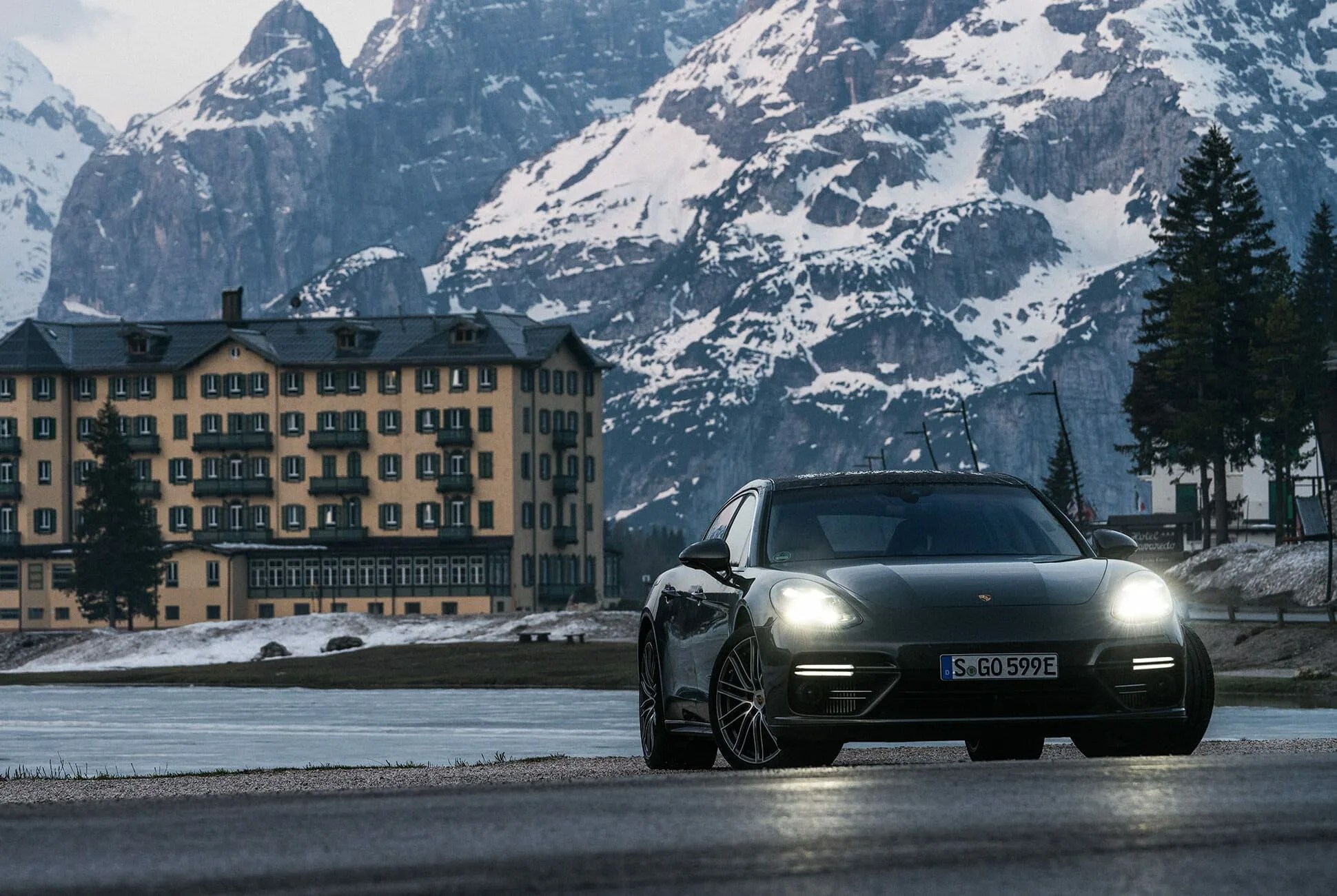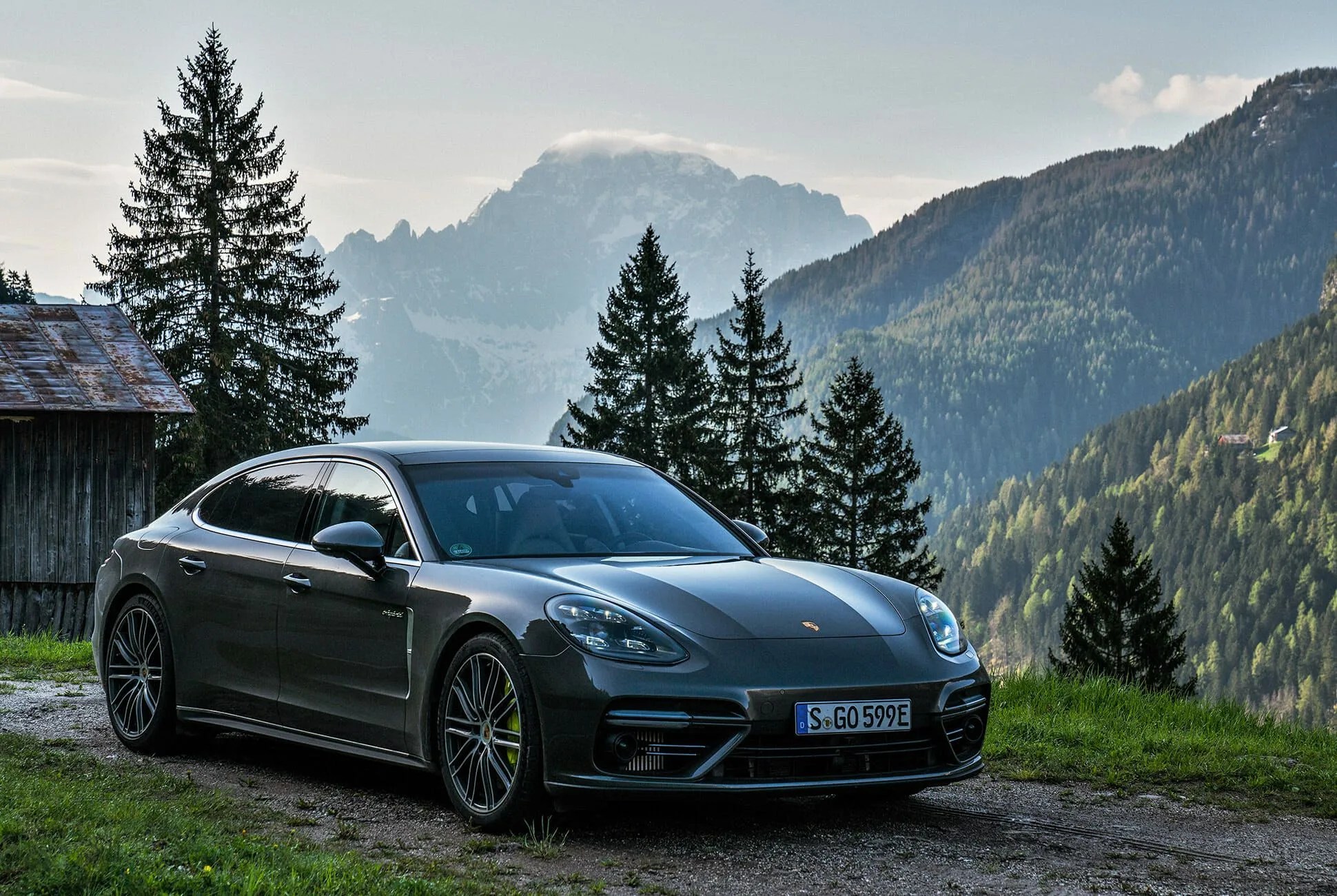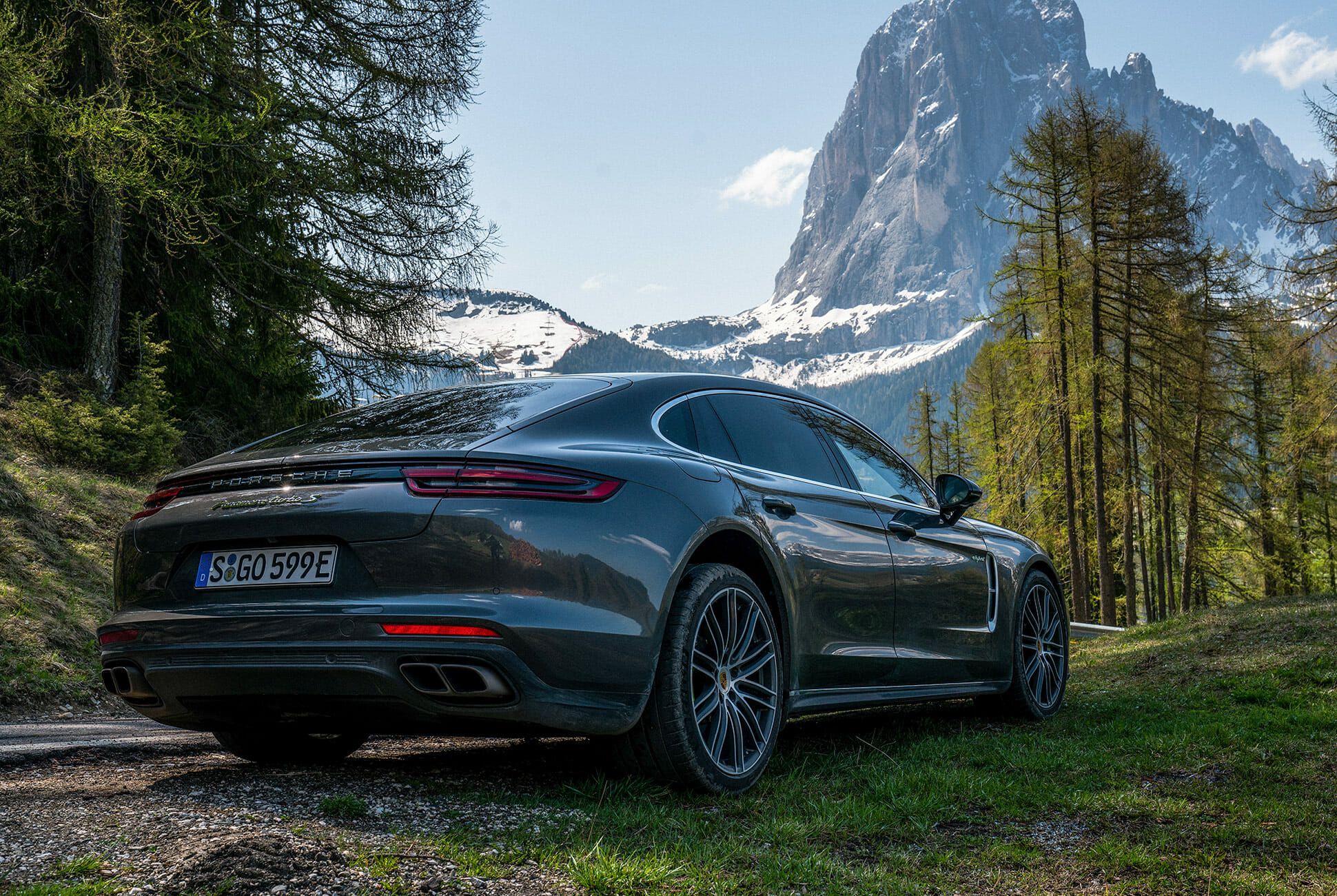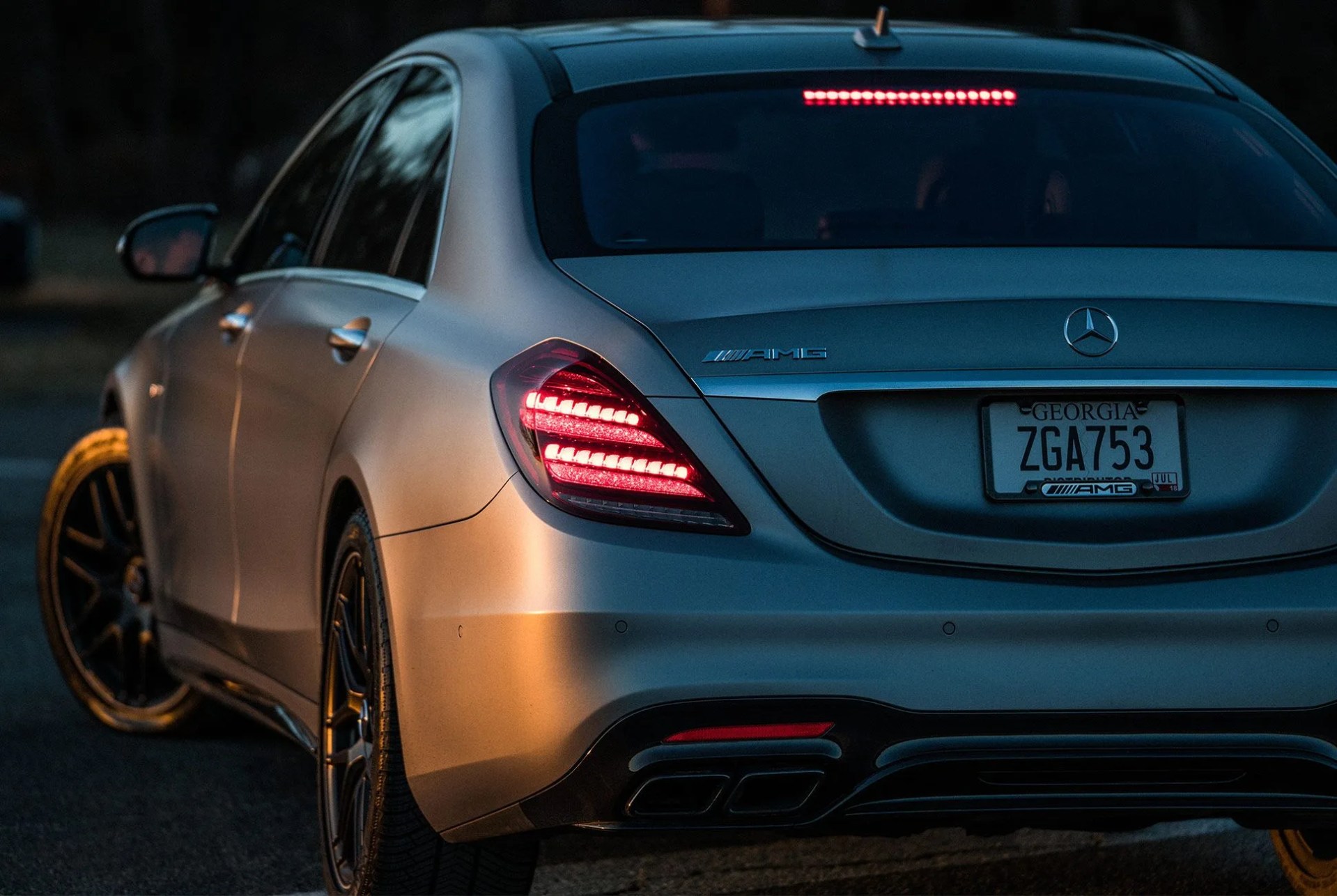8 photos
Porsche has always focused tighly on the performance aspect of the Panamera — as it should. After all, its customers don’t generally want a luxury sedan that goes sorta fast; they want a fast car that’s sorta luxurious. That, in a nutshell, is the Panamera: two extra doors and a few extra square feet of leather, sure, but still a Porsche at heart. Driven hard, the current generation leaves little to the imagination.
For that reason, it’s rarely spoken of in the same breath as the likes of the Mercedes S-Class, the BMW 7 Series, and the Audi A8. All of these flagship luxury sedans can certainly be called sporty, but they excel mostly in their waftiness — that ethereal, cloudlike quality that allows them to float down the road with the kind of unflustered poise that would make grandma comfortable when you pick her up for tea on Sunday morning. They’re also reserved and somber in the right context, the kinds of vehicles that can pitch in at a state funeral. Panameras? Not exactly mourning-mobiles.
But that doesn’t mean they can’t pull other executive duties — as Porsche itself clearly believes, considering its top-line variant is dubbed the Panamera Turbo S E-Hybrid Executive (from $194,800 — for reference, the base non-hybrid Panamera begins at $85,000). That’s a mouthful, and also a handful: The $194,800, 680-horsepower sport sedan is the second most pricey and powerful car in Porsche’s entire lineup, behind only the 911 GT2 RS. That car clocks in with just 20 extra horses, but a steep $100,000 extra dollars above the top-dog Panamera — but it’s nearly pure racecar.
The $194,800, 680-horsepower sport sedan is the second most pricey and powerful car in Porsche’s entire lineup, behind only the 911 GT2 RS.
So what does the “Executive” label reward buyers with, and, more importantly, is it enough to make the Panamera a true S-Class competitor? I spent several days bombing down the German autobahn and touring around the mountain hairpins of the northern Italian Dolomites in one to find out. The first thing I learned: it has tables.
That’s right — tables. In a Porsche. They’re in back, of course, presumably for signing large checks or approving spreadsheets on laptops. We’re not just talking trays that fold out from the front seats, like in a Bentley Mulsanne or a Boeing 737, but actual tables that spring up out of nowhere and allow you to perch whatever you need on them securely. While waiting for the weather to clear so I could shoot some photos, I climbed into the back to spend a few hours using the Panamera Turbo S E-Hybrid Executive as my mobile office. The tables came in handy — one as a laptop perch, the other as a place to stash my iPhone and some snacks and drinks. Eventually, I switched it up, stowing the tables and just putting my feet up on the center console, with my laptop on my lap, as the Maker intended. The Executive happens to have seat massagers at all four corners, so I was able to work while having my kinks worked with sublime effectiveness. I had to admit, it was very S-Classy. The seats aren’t quite as cushy — the engineers opted to err on the side of support rather than plush comfort, given the car’s ability to spontaneously corner like a Sidewinder missile — but they’re infinitely adjustable, and both chilled and heated, as are the front thrones.
